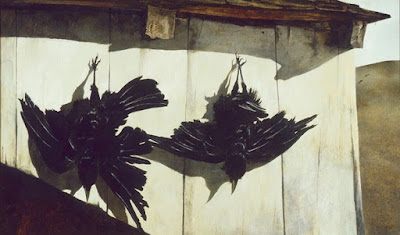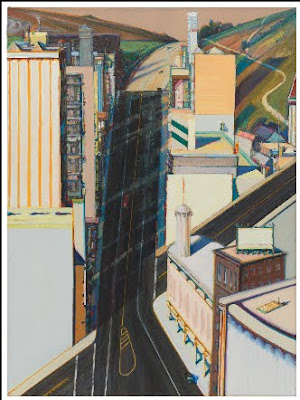The Woodshed, Andrew Wyeth

Andrew Wyeth's work can be controversial. Some consider him a complete realist, others a romantic, and often, a man creating a statement of continuity in an changing world. Like him or hate him, today's image certainly evokes feelings from all of us. Here we have dead crows, bright sun we do not see, a spare landscape and portrayed in an almost monochromatic arrangement. Titled, The Woodshed, it is a tempera work done in 1945, measuring 33" x 56". I have not been able to determine the owners of the work, but my reference book credits Mr. & Mrs. C. Porter Schutt, so it is possible it is still in their private collection. I find the date interesting. World War II is just ending. I am not sure we can connect the two however, it is remarkable - two dead crows, two defeated nations. Wyeth has a talent for striking compositions, this being a perfect example. Often, close up, corners appear as abstract arrangements, but as the viewer pulls back, a



